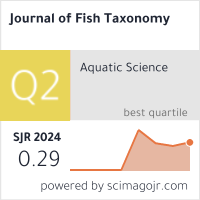Examine the function of AI in enhancing diagnostic precision and efficacy in histopathology: A Systematic Review
Keywords:
Artificial intelligence, histopathology, diagnostic accuracy, efficiency, and systematic reviewAbstract
Background: Artificial intelligence (AI) has become a game changing tool in histopathology, with the potential to make routine practice more accurate, efficient, and reproducible. Traditional pathology faces constraints due to inter-observer variability, escalating workloads, and the growing demand for precision medicine, underscoring the necessity for innovative digital solutions.
Objective: To systematically evaluate the contribution of AI in improving diagnostic precision and operational efficiency in histopathology.
Methods: A comprehensive literature search was performed on PubMed, Scopus, Web of Science, and Google Scholar for studies published from 2011 to 2025. Eligible studies encompassed randomized controlled trials, cohort studies, and diagnostic accuracy assessments examining AI applications in histopathological image analysis. Data extraction concentrated on AI methodologies, diagnostic performance indicators (accuracy, sensitivity, specificity, AUC), efficiency results, and constraints. The QUADAS-2 and Newcastle–Ottawa tools were used to rate the quality of the study.
Results: AI models, especially convolutional neural networks (CNNs) and transformer-based architectures, showed very high diagnostic accuracy (often over 90%) in finding, grading, and subtyping cancer. Numerous studies indicated a decrease in inter-observer variability and an enhancement in workflow efficiency, particularly through reduced slide review duration. Nonetheless, dataset heterogeneity, absence of external validation, and restricted integration into clinical workflows continue to pose considerable challenges. Ethical issues, such as algorithm transparency and data privacy, were also brought up a lot.
Conclusion: AI has a lot of promise for improving the accuracy and speed of histopathology diagnoses, but it needs to be thoroughly tested, standardized, and integrated into current clinical workflows before it can be widely used. To make sure that the implementation is safe and effective, pathologists, computer scientists, and policymakers need to work together.








